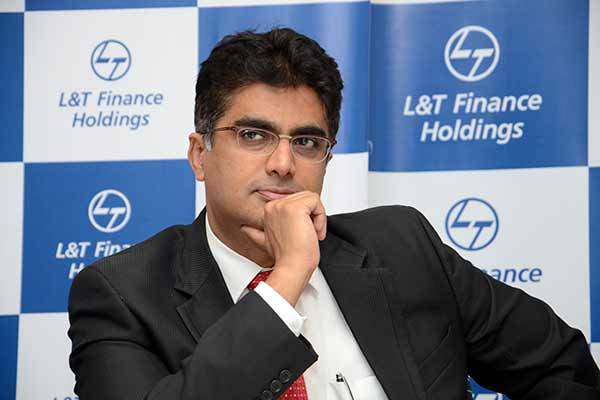L&T Finance Holdings reported a 71% year-on-year (y-o-y) growth in net profit on the back of higher margins and fee income. The company has made the entire Rs 3,000-crore provision required on its Rs 5,000-crore legacy stressed book, Dinanath Dubhashi, MD & CEO, told Shritama Bose. Excerpts:
While your revenues have grown 32%, profit has grown 71%. What would you attribute the profit growth to?
A couple of years ago, we started this journey of profit growth and increasing our RoE (return on equity). Two years back, our RoE was less than 10% and we have reported 18.45% this quarter. Our book growth continues to be robust. We have a 27% book growth this quarter. We decided that we would concentrate not only on NIMs, but we’ll also develop a very good fee channel. That is now sustainable and our NIMs plus fees have improved smartly to 6.6% from 5.8% last year. The third part is that expenses have been well-controlled. Our cost-to-income (ratio) is down to 23% from 24% last year. Two years ago, this was in the range of 33-35%. Finally, asset quality has improved drastically. All this has resulted in an excellent profit and RoE growth.
How has the implementation of Ind-AS affected you?
Like all NBFCs, we have also implemented the Ind-AS standard of accounting. It has many small differences over GAAP (generally accepted accounting principles), but the big change is in the way we recognise stress and the way we provide for them. We have not only recognised our NPAs but also all other standard assets, which were in some kind of stress, especially from our old infra book. We have recognised them as stage-3, called them out and said our total stage-3 is Rs 5,000 crore. It will not go higher than this because we have recognised not only current stress, but also incipient stress. On this Rs 5,000 crore, we had estimated that a provision of about Rs 3,000 crore will be required. Of this Rs 3,000 crore, over the last eight quarters, we have set aside Rs 1,200 crore. We had decided to take the remaining Rs 1,800 crore over the next six quarters. As we have moved to Ind-AS, we have taken that entire Rs 1,800 crore-hit. So, the entire legacy asset book has not only been recognised, but also been provided for completely.
Your rural finance book has seen 76% growth. What products are driving that growth?
Rural finance has three products. One is tractor finance, one is two-wheeler finance and the third is micro loans. Two years ago, our wholesale portfolio was about 65% (of the total loan book) and rural and housing finance together about 35%. Now, wholesale has come down to about 53% and rural and housing is 46%. We actually want to flip it. Rural plus housing should be two-thirds (of the loan book). I need to qualify the growth for this quarter because this is growth over the first quarter of last year, when we were just recovering from the effects of demonetisation. So, there is some base effect as well. But, the growth in rural finance will be sustainable at 35-40% for the next couple of years. Our overall portfolio growth will be about 20-25%.
Your wholesale finance book has grown 7%. Is it a conscious decision to slow down in that space or would you say you are growing faster than most others in that space, considering investment is limited?
We are concentrating more on renewables, where investment is quite good. It is not so much lack of opportunities. There is strategic reduction in wholesale. The other thing is that we have a sell-down desk also. We do business and then we sell down a large part of it to other players. So, we book the fees and our book growth doesn’t happen that much.
In wholesale, which are the sectors where you are seeing growth? Is it mostly working-capital finance?
It is mostly project finance, which then flows into operating assets. A large part of our disbursement has been in renewables and roads.
What has cost of funds been like for you, given that yields have shot up?
If you compare cost of funds with last year, it is down seven basis points (bps) to 8.29% from 8.36%. But, that doesn’t show the right picture. If you see the last two continuous quarters, it is up six bps from 8.23%. So it has steadily gone up. The increase would have been higher, but we have the advantage that in the meantime, we have been upgraded by rating agencies to AAA from AA+. So it is a mix of increasing interest rates and an upgrade.


